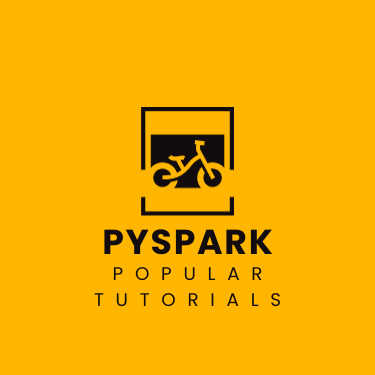As the demand for data processing and analytics continues to soar, PySpark has emerged as a powerful tool in the data streaming landscape.
Here on supergloo.com, a hub for Pyspark tutorials, there are insights to help users harness the full potential of PySpark.
In this blog recap post, let’s explore the top five pyspark tutorials from the last year which focus on: pyspark join, pyspark filter, pyspark groupby, pyspark udf, and withcolumn pyspark.
Each tutorial is tightly focused to deliver understanding of PySpark’s capabilities at the moment it is needed.
Table of Contents
- 1. PySpark Join:
- 2. PySpark Filter:
- 3. PySpark GroupBy:
- 4. PySpark UDF:
- 5. WithColumn PySpark:
- Conclusion:
1. PySpark Join:
PySpark’s join operation is a cornerstone in data streaming workflows and enables the combination of multiple datasets based on common keys. Multiple tutorials on SuperGloo.com delve into the intricacies of PySpark joins, exploring different join types (e.g., inner, outer, left, right) and showcasing how to optimize performance through strategic use of broadcast joins. Whether you’re merging streaming data with historical records or performing real-time data enrichment, understanding PySpark joins is essential for building robust and efficient streaming pipelines.
Start with the Pyspark join tutorial.
2. PySpark Filter:
The pyspark filter tutorial shows the power of simple data refinement in PySpark streaming. Filtering operations are fundamental for streamlining datasets, extracting relevant information, and maintaining data quality. Filter tutorials here provide insights into crafting intricate filtering conditions, handling null values, and optimizing filter operations to enhance the efficiency of PySpark based applications. PySpark filtering is simply fundamental to ensuring that your data pipelines process only the data that matters most.
See PySpark Filter tutorial.
3. PySpark GroupBy:
In the world of PySpark data processing, the pyspark groupby keyword takes center stage when it comes to aggregating and summarizing data. Tutorials on this site attempt to demystify and simplify the GroupBy operation to illustrate how to perform aggregations on streaming datasets. Whether you’re calculating real-time statistics or generating key performance indicators, understanding PySpark groupBy is crucial. The tutorials here delve into complexities such as windowed aggregations, enabling users to unleash the full potential of PySpark for data summarization.
See PySpark groupBy tutorial for references.
4. PySpark UDF:
User-Defined Functions (UDFs) in PySpark empower users to extend PySpark’s functionality and process data with custom logic. These tutorials guide users through the creation and integration of UDFs in PySpark streaming applications. Whether you need to apply complex transformations, integrate external libraries, or handle specialized data types, PySpark UDFs can offer a flexible solution.
See the PySpark UDF tutorial for mroe.
5. WithColumn PySpark:
PySpark uses the withColumn method for adding or replacing columns in a DataFrame during data streaming. It is a function pyspark developers often ask about. The tutorials provided here offer comprehensive insights into using withColumn to dynamically modify streaming data, apply transformations, and derive new features. Understanding how to wield withColumn effectively is essential for crafting PySpark pipelines which respond dynamically to evolving data requirements.
See WithColumn PySpark tutorial for further examples.
Conclusion:
The free tutorials offered on this site provide essential knowledge on PySpark, allowing users to master the intricacies of key operations such as join, filter, groupby, udf, and withColumn. As the world of data continues to evolve, these tutorials hope to serve as an invaluable resource for those of you seeking to harness the full potential of PySpark in their data processing endeavors. Whether you’re a seasoned data engineer or a novice explorer, we hope these tutorials provide the guidance needed to navigate the complexities of PySpark and emerge with confidence in crafting efficient and scalable data streaming solutions.
Also, lastly, not covered in this post, but also quite popular and relevant is PySpark SQL. There is entire cateogory here on the site in the PySpark SQL tutorials section of the site. Check it out!

